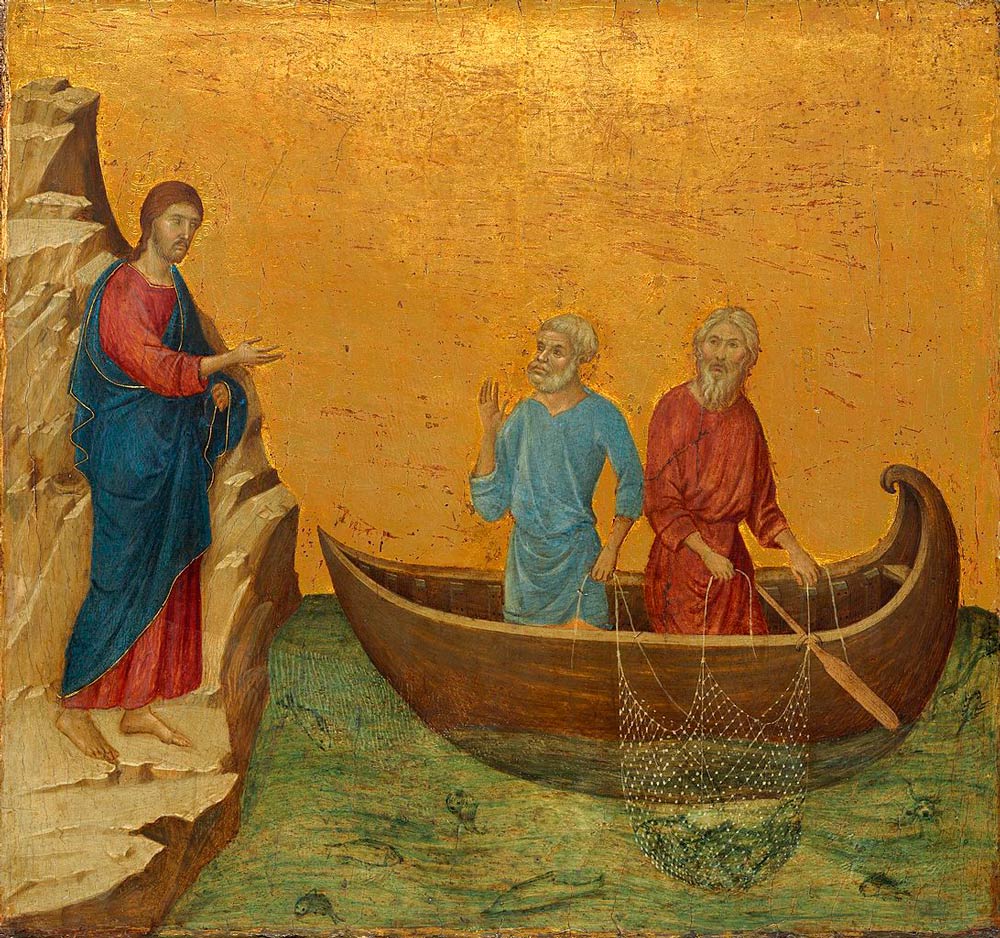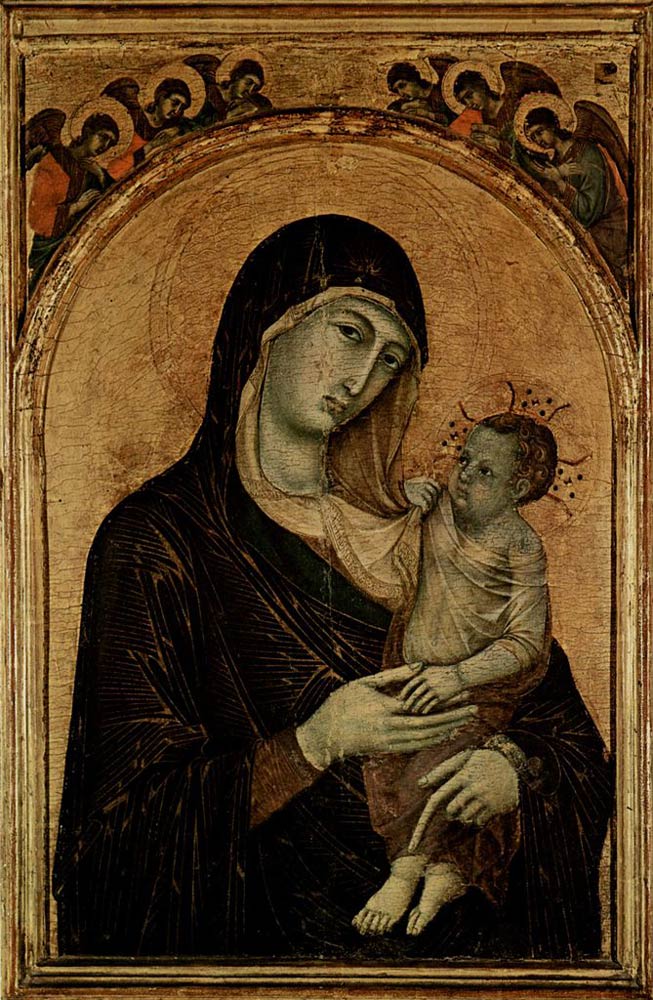| Duccio | |
|---|---|
 |
|
| Born | c. 1255-1260 Siena, Italy |
| Died | c. 1318-1319 Siena, Italy |
| Nationality | Italian |
| Movement | Sienese school, Gothic Style |
| Field | Painting |
| Works | View Complete Works |
Duccio de Buoninsegna was an Italian artist born in the Republic of Sienna during the late 13th century. It is commonly believed he led a struggled existence. Records indicate he was married with 7 children. Documents also suggest he incurred much debt and even governmental fines for unknown offenses against the state. However, even with these burdens, his extraordinary artistic ability allowed him to become famous in his own lifetime.
Much that is known about him is derived from his work through the years. He was an extremely popular figure in the 1300’s while creating what then was considered radical paintings. Ironically, while living a lifestyle not conducive with the political moorings of the time much of his early work was displayed at government and religious structures.
Duccio’s initial commissioned work is thought to have been in 1278, when at 23 years of age, he was asked to create a dozen wood covers for important government documents. Seven years later he would be asked to paint Madonna with child, together with an assortment of other figures to be used as an altarpiece in the Basilica of Santa Maria Novella.
Art Form
 It is unclear whom Duccio may have studied under. There are some who hold the belief that it may have been Cimabue. Others hold to the notion that he may have actually made the journey to Constantinople due to the likeness his art form displays in comparison to that of the Byzantine Empire. Byzantine art, like Duccio’s style exhibits popular religious themes with gold backgrounds. That said, Duccio was much more bold and unique in his styling versus traditional Byzantine art.
It is unclear whom Duccio may have studied under. There are some who hold the belief that it may have been Cimabue. Others hold to the notion that he may have actually made the journey to Constantinople due to the likeness his art form displays in comparison to that of the Byzantine Empire. Byzantine art, like Duccio’s style exhibits popular religious themes with gold backgrounds. That said, Duccio was much more bold and unique in his styling versus traditional Byzantine art.
Most of his works were created on wood panels using egg tempura. Tempura is a medium of paint that is permanent and long lasting, as evidenced by many of Duccio’s masterpieces still available today. His use of gold leafing is also a distinguishable feature of his art work. What separates Duccio from other artists of his era is his masterful ability to provide detailed features, not an easy task when utilizing tempura paint.
 Duccio has been called the father of Sienese painting and one of the founders of Western art. He is given credit for being the first artist to create paintings which are now classified as being of the Trecento style. In fact, he is also credited with being the creator of the Sienese School of painting and having much input to the Gothic style.
Duccio has been called the father of Sienese painting and one of the founders of Western art. He is given credit for being the first artist to create paintings which are now classified as being of the Trecento style. In fact, he is also credited with being the creator of the Sienese School of painting and having much input to the Gothic style.
Later Life
Perhaps Duccio’s most famous creation was also one of his last. Maesta’ was an altarpiece for the Cathedral of Sienna completed in 1311. It was another rendition of the Madonna and child for which he was compensated with 3,000 gold florins, an unheard of fee for paintings at that time. After the Maesta’, little is known of any other works by Duccio. He did open a workshop in the years that followed, but it is a widely held theory that most of the pieces coming from there were produced by students under his tutelage. In 1304 he purchased a vineyard indicating some financial security, but alas, he passed away c. 1319, leaving a multitude of debt.